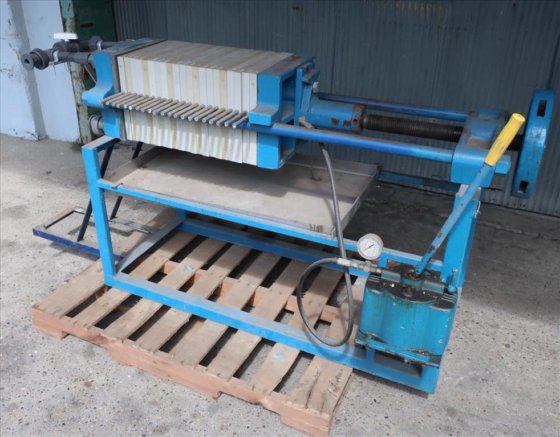Discover the applications and benefits of a recessed plate filter press. This comprehensive article explores the features, advantages, and working principles of a recessed plate filter press. Learn how this innovative filtration equipment efficiently separates solid and liquid substances in industries such as wastewater treatment, chemical processing, and mining.
Introduction:
The recessed plate filter press is a versatile filtration equipment used to separate solid and liquid substances in various industries. This article provides a comprehensive guide to the recessed plate filter press, exploring its applications, benefits, and working principles. By understanding its key features and real-world examples, businesses can optimize solid-liquid separation processes and achieve efficient filtration results. Discover the exceptional capabilities that make the recessed plate filter press a preferred choice for industries requiring reliable and cost-effective filtration solutions.
What is a Recessed Plate Filter Press?
A recessed plate filter press is a specialized filtration equipment designed to separate solid and liquid substances through a filtration process. It consists of a series of recessed plates, which are alternately arranged with filter cloths. When the press is closed, the solid particles are retained on the filter cloth, while the liquid passes through the gaps between the plates, resulting in effective solid-liquid separation.
Working Principles of a Recessed Plate Filter Press
The recessed plate filter press operates based on the principle of pressure filtration. The slurry, containing solid and liquid substances, is pumped into the filter press chambers. As the press is closed, the pressure is applied, forcing the liquid to pass through the filter cloth while retaining the solid particles. The filtrate is collected and discharged, leaving behind the separated solids on the filter cloth. The plates are then opened, and the solids are removed for further processing or disposal.
Key Features of a Recessed Plate Filter Press
Recessed plate filter presses offer several key features that contribute to their efficiency and effectiveness in solid-liquid separation. Their robust construction ensures durability and long-lasting performance. The recessed plates provide ample space for solid particles, allowing for high-capacity filtration. The filter cloths are designed to provide excellent filtration efficiency while maintaining good cake release properties. Additionally, recessed plate filter presses have adjustable operating parameters, allowing for flexible and customizable filtration processes.

Applications of a Recessed Plate Filter Press
The recessed plate filter press finds applications in a wide range of industries. In wastewater treatment plants, it is used to dewater sludge and separate solids from liquid effluent. In the chemical processing industry, the recessed plate filter press is utilized for the clarification and separation of various chemical suspensions. In the mining sector, it is employed for tailings dewatering and the recovery of valuable minerals. Recessed plate filter presses are also applied in pharmaceutical manufacturing, food processing, and industrial wastewater treatment.
Conclusion:
The recessed plate filter press offers a reliable and efficient solution for solid-liquid separation in various industries. Its unique design, working principles, and key features make it a preferred choice for optimizing filtration processes. By understanding the applications, benefits, and real-world examples of the recessed plate filter press, businesses can achieve cost-effective and reliable solid-liquid separation, leading to improved productivity and product quality. Embrace the capabilities of the recessed plate filter press and optimize your solid-liquid separation processes.
